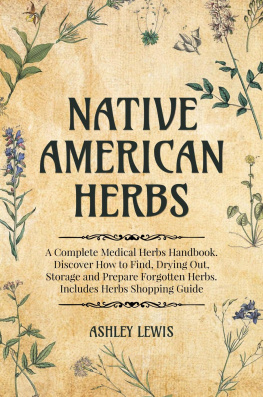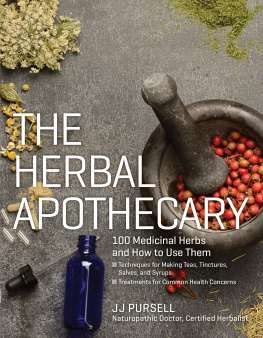Table of Contents
Introduction
For many years man has rediscovered nature as a whole and the phrase "return to nature" is often used.
Thanks to research and scientific knowledge about the use of plants, we are now able to bring the result of these experiences to all homes, so that small ailments or a normal facial cleansing and general care of our body can be done alone.
In order to respond to these problems in a clear and easy to understand way, making known the domestic use and their active ingredient, this volume is summarized in three parts:
1) Medicinal herbs and their properties;
2) Diseases, ailments, disorders, alterations and related soothing and causative recipes;
3) Phytocosmetics use to benefit the external part of our body for aesthetic beauty.
PART ONE
Medical Herbs
FIRTREE
Family: Pinaceae.
It is an evergreen tree that can be found in the forests of the mountain regions. It is popular all over the world because it represents the traditional Christmas tree and its height can reach 50 meters. Among the most famous species are the Silver Fir, which is very widespread in Italy, and the Spruce, whose wood is very valuable and widely used in carpentry. Spruce has balsamic, expectorant, slightly antiseptic properties, so it is indicated for the treatment of respiratory disorders such as colds, flu, bronchitis, pneumonia, asthma, tracheitis. It is also used for urinary tract infections, cystitis, impotence, gout. It is an effective deodorant, and having rubefacent properties, i.e. able to stimulate blood circulation, is an excellent remedy for the treatment of rheumatism.
WORMWOOD
Family: Composite.
It is a herbaceous plant from 70 to 80 cm. high with large leaves, multifide and flowers in flower heads. It exudes a strongly aromatic odour similar to that of lemons and that is why it is grown in gardens. In addition, properly dosed, it is an exquisite condiment for roasts, fatty meat, sauces and salads.
From the therapeutic point of view it is an excellent vermifuge, causes the appearance of menstruation, promotes gastric secretion and helps the stomach to function better.
ACACIA
Family: Mimosaceae.
It is a tree native of East Africa but today very widespread in USA has very small flowers gathered in ears, compound leaves and fleshy fruits. Among the most famous species we remember the Acacia gommifera from which the gum arabic is obtained, which is mainly used to prepare emulsions with fatty bodies and to keep insoluble powders in suspension in water. Its active principles are useful to heal inflamed mucous membranes of the intestine and respiratory system. It is also an excellent purgative.
ACANTHUS
Family: Acantacee.
It is a perennial herbaceous plant with large pennatifid leaves and white, pink or purple flowers, arranged in long ears. It grows spontaneously among the ruins of the entire Mediterranean area but is also cultivated as an ornamental plant.
The best known species in medicine is the Acanthus Mollis which has emollient properties and is also used in inflammation, throat, diarrhea and bleeding. For external use, in washings, the acanthus infusion is used in family practice against skin irritations and insect bites. Acanthus is also recommended as a diuretic
MAPLE
Family: Aceraceae.
It is a tree that can reach a height of 12 meters and is commonly found in the woods. It prefers fresh but not wet soils and is often cultivated as a guardian tree along the rows of vines. Its active ingredients are contained in the bark that is harvested in spring, detaching it with the tip of a knife. Maple has refreshing and astringent properties and, for internal use, is indicated against inflammation, diarrhea and intestinal disorders. For external use it is an excellent remedy for fragile and reddened skin.
SORREL
Family: Polygonaceous.
Sorrel is a perennial herb very similar to spinach because of its spade shaped leaves; it grows in wet meadows and along watercourses.
It has diuretic, refreshing, febrifuge and anti-inflammatory properties.
It is indicated against flu, fevers and hemophilia. It also contains a considerable amount of vitamin C and is therefore indicated in anaemia and in the treatment of scurvy, a disease that has fortunately disappeared today. The infusion is useful for treating acne, eczema and minor skin disorders. However, it is important to remember that if taken in excessive doses, it can cause poisoning, especially if fresh juice is drunk. Finally, Sorrel, being particularly rich in oxalates, is not recommended for liver patients and people with liver and kidney stones.
WILD SORREL
Family: Oxalidaceae.
It is a perennial herbaceous plant, maximum 15 cm. high, which is found in the woods of mountain areas. Its active ingredients are found in fresh leaves and roots and are, as for Sorrel, vitamin C, potassium acid and oxalate.
Acetosella purifies the blood and is an excellent diuretic, purifying,
febrifugeand refreshing; it is indicated in mouth and throat diseases, abscesses, fevers, tumors and sores. It can also be used as a polish or stain remover, to clean wicker furniture, silver and to remove ink stains from clothes.
YARROW GRASS-ROCKED SUBSP. MUSKATA
Family: Asteracee/Composite.
It is a perennial herbaceous plant, from a minimum of 10 cm. to a maximum of 50 cm. high, which gives off a strong camphorized smell. The ancients considered it the herb of the warrior because it owes its name to the mythical Achilles who, at the suggestion of the goddess Venus, used it to heal his wound that otherwise would have been fatal.
In fact, applied locally it is strongly cicatrizant, moreover it is slightly diuretic, digestive and aromatic. It serves to control pressure changes and normalize blood circulation. Its bitter taste stimulates the appetite and is an excellent remedy in states of weakness.
ACONITE (POISONOUS)
Family: Ranuncolaceae.
Aconitum is a perennial herbaceous plant up to 150 cm. high and grows in the humid and fertile fields of mountainous areas. Its blue flowers are very beautiful and decorative but its poison is very powerful and should not be used without a prescription. All parts of the plant contain aconitine, a poison that acts by exciting and then paralyzing the nerve centers and death occurs by cardiac and respiratory arrest. Two equally poisonous substances are found in the roots: Napellina and Neopellina. The Aconitum has analgesic, antinevralgic, heart moderating, decongesting, diuretic properties.



















